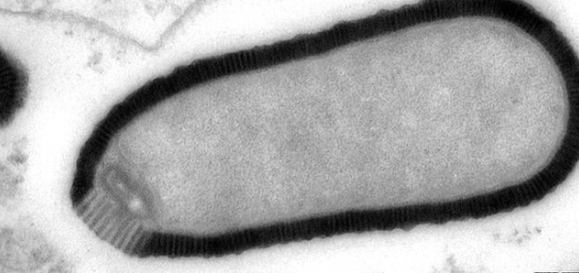Coronavirus epidemics first hit more than 21’000 years ago

Last Updated on September 20, 2021 by Joseph Gut – thasso
September 19, 2021 – An article like this one goes right to my bones. Having a lifelong affinity to history of things, not only in my field of theragenomic medicine, but also in many other issues like politics, humanity, science, and the survival of humanity in a possibly adverse environment, I am flabbergasted by this article, for very many reasons. But let’s start out by the article which appeared recently in MedicalXpress and has very slightly been edited only, and then see some added thinkings about survival (biological, environmental, genetic, etc.)
 – Beginn of cited Article: Sarbecoviruses have crossed into humans twice in the last decade, leading to the deadly SARS-CoV-1 outbreak in 2002-04 and the current COVID-19 pandemic, caused by the SARS-CoV-2 virus. A new Oxford University study, published today, shows that the most recent common ancestor of these viruses existed more than 21,000 years ago, nearly 30 times older than previous estimates.
– Beginn of cited Article: Sarbecoviruses have crossed into humans twice in the last decade, leading to the deadly SARS-CoV-1 outbreak in 2002-04 and the current COVID-19 pandemic, caused by the SARS-CoV-2 virus. A new Oxford University study, published today, shows that the most recent common ancestor of these viruses existed more than 21,000 years ago, nearly 30 times older than previous estimates.
Despite having a very rapid rate of evolution over short timescales, to survive, viruses must remain highly adapted to their hosts—this imposes severe restrictions on their freedom to accumulate mutations without reducing their fitness. This causes the apparent rate of evolution of viruses to slow down over time. The new research, for the first time, successfully recreates the patterns of this observed rate decay in viruses.
“We developed a new method that can recover the age of viruses over longer timescales and correct for a kind of ‘evolutionary relativity,” where the apparent rate of evolution depends on the timescale of measurement. Our estimate based on viral sequence data, of more than 21,000 years ago, is in remarkable concordance with a recent analysis on human genomic dataset that suggests infection with an ancient coronavirus around the same time,” said Mahan Ghafari, from Oxford University.
The study also demonstrates that while existing evolutionary models have often failed to measure the divergence between virus species over periods—from a few hundred to a few thousands of years—the evolutionary framework developed in this study will enable the reliable estimation of virus divergence across vast timescales, potentially over the entire course of animal and plant evolution.
 The new model enables us to not only reconstruct the evolutionary history of viruses related to SARS-CoV-2, but also a much wider range of RNA and DNA viruses during more remote periods in the past.
The new model enables us to not only reconstruct the evolutionary history of viruses related to SARS-CoV-2, but also a much wider range of RNA and DNA viruses during more remote periods in the past.
The model predictions for hepatitis C virus—a leading global cause of liver disease—are consistent with the idea that it has circulated for nearly a half a million years. HCV may thus have spread worldwide as an intrinsic part of the “Out-of-Africa” migration of modern humans around 150,000 years ago.
The different genotypes of HCV indigenous to human populations in South and South-East Asia and Central Africa may have originated over this prolonged period and this revised timescale may resolve the longstanding riddle of their global distributions.
“With this new technique we can look much more widely at other viruses; re-evaluate the timescales of their deeper evolution and gain insights into host relationships that are key to understanding their ability to cause disease,” says Prof Simmonds, Oxford University. – End of cited Article.
This work addresses and illustrates a fascinating question which comes out of the theories of evolution based on Charles Darwin, which, in essence. would say that under environmental conditions and/or pressure, species of the world are going either to survive or to succumb to a challenge by, for example, a virus. This is called “survival of the fittest“. While humans, based on their generation times and cycles of reproduction, would be very slow to adapt to such challenges, viruses would be very fast to do so. Whatever might have been the selection pressure on “SARS-CoV-x” type of viruses and/or variations and mutations thereof, they seem to have realised their survival over extended periods of time. It seems that on an extremely shortened time axis, say from 2019/2020 to today, all these evolutionary and survival strategies are in place and working. On one hand, we have patients who succumb to the very first form of the SARS-CoV-2 just like that. On the other hand, we have patients who survive the battle with the virus. And, as humans are, they have come up with tools and behaviours to battle and limit the virus, such vaccines and others. That builds up selection pressure on the virus, and sure enough, we find new variants and mutations of the virus, aiming at avoiding the measures taken by humanity in order to limit the virus’s effects. The battle is on. Fascinating. In the more recent past, humans have seemingly won these survival battles. There is, however, no guarantee, that this will be the case every time and for every human individual. In fact, there is ample evidence that among humans, there exist individuals with (a) genetic predisposition(s) for infection with the SARS-CoV-2 virus or variants thereof and severe forms of resulting Covid-19 disease, and of individuals who carry genetic predisposition for very severe, if not fatal outcomes with treatment options for Covid-19 disease (i.e. vaccines). Very sadly meaning that these unfortunate individuals would probably have very bad cards in the survival battle with SARS-CoV-2.
See here a short and somewhat entertaining sequence on the survival of the fittest (or so called “natural selection“), according to Darwin:

